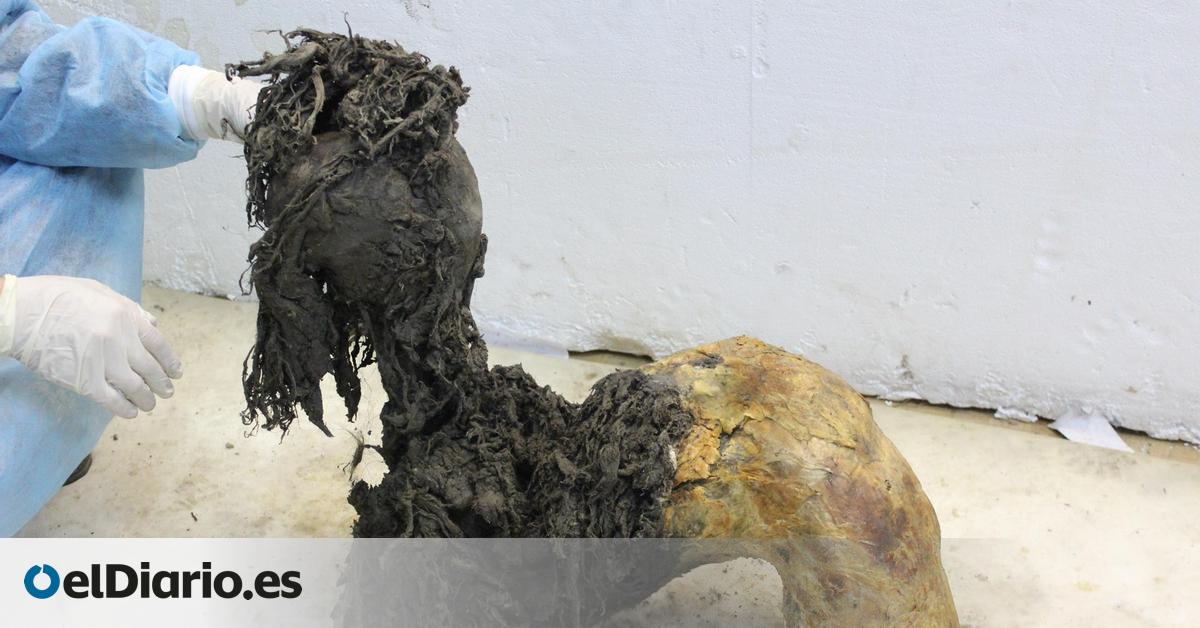
His name was Yuka and he was a woolly mammoth. He lived in Siberia during the Ice Age, when global temperatures dropped significantly and glaciers expanded. And its name, like its genetic material, is etched in the history of scientific discovery. Because it is the world’s oldest RNA.
RNA, or ribonucleic acid, is a molecule that helps convert the information collected in DNA into activity within cells. In other words, it acts as a messenger for making proteins. Previously, it was thought that he was too frail to survive the short period after death. But for the first time, a scientific team has successfully isolated and sequenced a molecule from this animal that lived around 40,000 years ago.
Research published in scientific journals cell A research team led by Stockholm University has shown that not only DNA but also RNA (a molecule that reveals which genes are active) can be preserved for long periods of time, providing a new perspective on the biology of a species that went extinct thousands of years ago.
The role of RNA is essential not only for protein synthesis but also for the expression and regulation of genes within the cell. The Yuca mammoth has been isolated and sequenced, and is now the oldest known specimen whose remains were preserved in Siberian permafrost.
The half-life of RNA is minutes to hours, “which is why we can say that we are looking at the physical and metabolic state of the Yuca mammoth’s muscles just before death,” Emilio Marmol, first signatory of the paper, told EFE. “That’s information you can’t get from DNA alone,” Marmol added. Marmol began his research at Stockholm University and completed it at the Globe Institute in Copenhagen, where he currently works.
Molecular markers of stress
Researchers detected specific molecular markers indicative of stress in gene expression in Yuka’s muscles. This “may be consistent with the evidence of marks found” on Yuka’s body, indicating that she was injured or hunted by a sharp-clawed predator, possibly a cave lion, which was already noted in previous studies.
The fact that RNA persists longer than previously thought means it will also be possible to sequence viruses such as influenza and coronaviruses preserved in Ice Age ruins.
However, the Malaga scientists consider that these stress markers could also be due to the fact of death itself, that is, “the cells being stressed because they are dying, or a combination of both factors.”
Furthermore, we discovered RNAs that encode most of the structural components of muscle and an entire set of regulatory microRNAs. These give an idea of what metabolic processes were actively regulated in the last moments of Yuka’s life.
The fact that RNA persists longer than previously thought means it will also be possible to sequence RNA viruses, such as influenza viruses and coronaviruses, preserved in Ice Age ruins, Rav Dalen, who is also a signatory of the paper, said in a statement from Stockholm University.
When studying ancient RNA viruses, samples from individuals who died from the infection can trace the past evolutionary origins of these viruses, help understand how they change and evolve in the present, or “even discover the origins of past pandemics that have been recorded to exist,” Marmol explains.
Studying ancient species of RNA viruses allows us to trace the past evolutionary origins of these viruses and helps us understand how they are changing and evolving in the present.
In the future, the researchers hope to carry out studies that combine prehistoric RNA with DNA, proteins and other biomolecules, which they say could “fundamentally change our understanding of extinct megafauna and other species and reveal many hidden layers of biology that have remained frozen until now.”
driven by curiosity
Until now, it was thought that RNA was not stored for long periods of time. Nevertheless, Marmol was “fascinated, like every child in the 90s, by the world of dinosaurs and the Ice Age” and was driven by “curiosity” to see if it was possible to save it.
It is a “proven fact” that without proper sterility and cryogenic precautions, RNA can be almost completely degraded within a few hours, but given certain conditions (cold and dry) both DNA and RNA can be stored for long periods of time.
Mathematical models indicate that the oldest DNA that can be theoretically sequenced is about 7 million years old. The current record is 2 million years for bacterial DNA in sediments and 1 million years for mammoth DNA.
For RNA, which is “much more delicate” to work with, there is not enough data to perform accurate modeling, “but there are certainly unanalyzed samples that contain older RNA than what we have reported.”



